Guitar World Verdict
Although some guitarists may prefer additional controls on the pedals themselves rather than via a mobile app, there's a sense of purpose and as astonishing level of sound quality that make these UA units worth considering.
Pros
- +
Excellent sound quality.
- +
Defined roles.
- +
Mono and stereo operation.
Cons
- -
Mobile app needed to access some facilities.
- -
No onboard presets.
- -
No MIDI or expression pedal facility.
- -
No supplied adaptor and 400mA needed.
You can trust Guitar World
Following the first six pedals in the UAFX range, Universal Audio has introduced three more pedals based on the company’s extensive plug-in range.
The Galaxy ’74 Tape Echo & Reverb, Del-Verb Ambience Companion and Max Preamp/Dual Compressor all have the same physical twin-footswitch format of previous models with options for mono and stereo usage.
Each pedal has a USB socket for connection to a computer for firmware upgrades, but you’ll need a smartphone or tablet running the UAFX Control app for basic housekeeping functions such as changing the footswitch functions and, in the case of the Del-Verb, loading in some tasty alternative tonal options.
Universal Audio UAFX Galaxy ’74
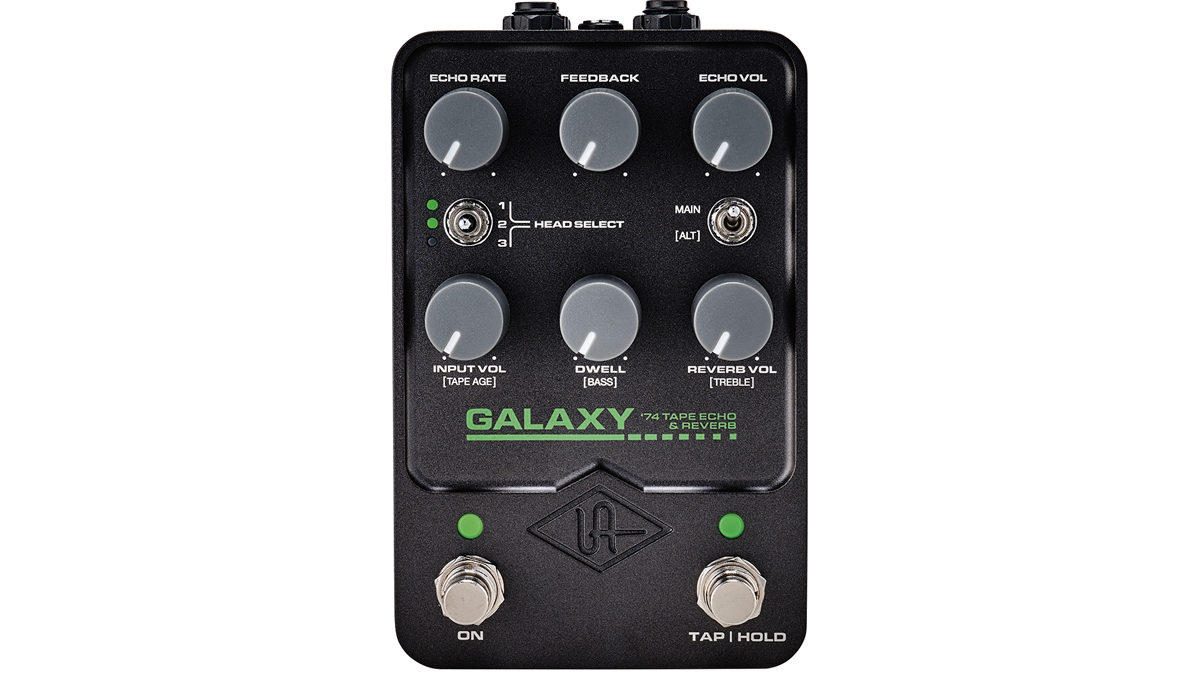
Releasing a digital pedal that emulates the Space Echo after Roland/Boss has already nailed it so well with the RE-202 might seem like a strange move. But for some years UA has had a well-respected plugin that takes on the task – and that has now found its way into a pedal that has the advantage of being smaller than the RE-202.
The pedal features all of the head combinations of an original RE-201 and has double the total delay time available, so you can have longer delays than the vintage unit was capable of. The RE-201’s spring reverb is also emulated with knobs for Reverb Volume and Dwell (adjusting the drive into the reverb tank, adding for a grungier lo-fi vibe).
The tape echo sound is reproduced beautifully. An Input Volume knob adds a touch of RE-201 preamp colour into the proceedings and the delay/echo has the usual Volume, delay time (Echo Rate) and Feedback controls, plus a set of secondary parameters for the lower three knobs: Bass and Treble, and Tape Age can really sculpt the sound of the repeats.
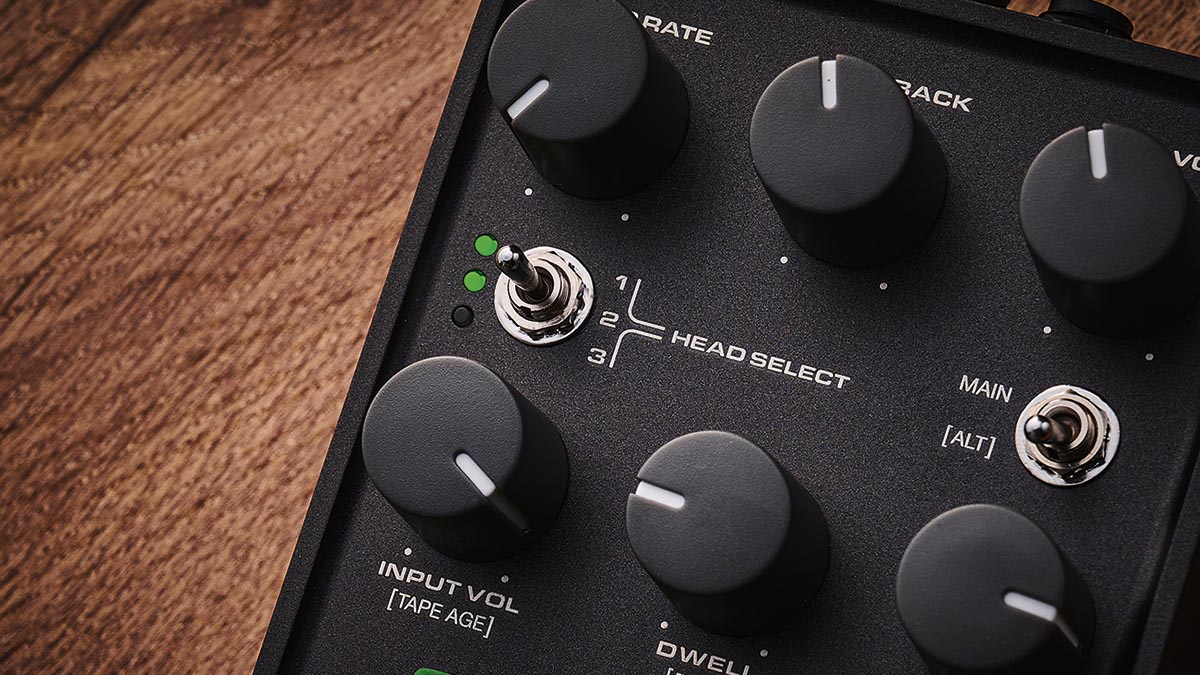
The second footswitch on the pedal offers tap tempo; you can also hold it to ramp up the feedback into self-oscillation. Alternatively, you can set the footswitches so they’re separate bypasses for Echo and Reverb.
Universal Audio UAFX Del-Verb
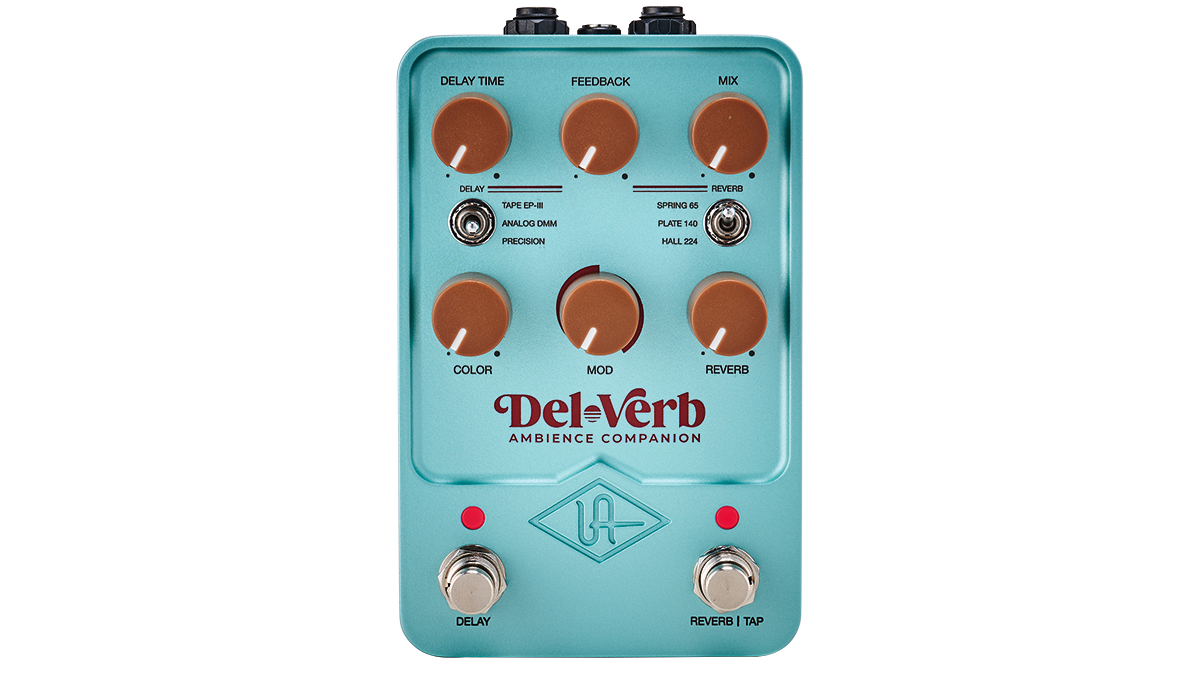
Delay and reverb together is a great idea that should find favour with anyone wanting to maximise pedalboard space and minimise power connections. Of course, it only works if both components of the sound are equally good and that’s not a problem with the Del-Verb as the pedal uses the tried-and-tested models from UA’s previous pedals – and it sounds superb.
For the delay side, there’s an EP-3 Echoplex tape delay, analogue BBD sounds based on a Deluxe Memory Man, and a pristine digital delay. For reverb, you get a Fender amp-style ’65 spring, an emulation of the classic 140 plate, and a hall reverb from a Lexicon 224.
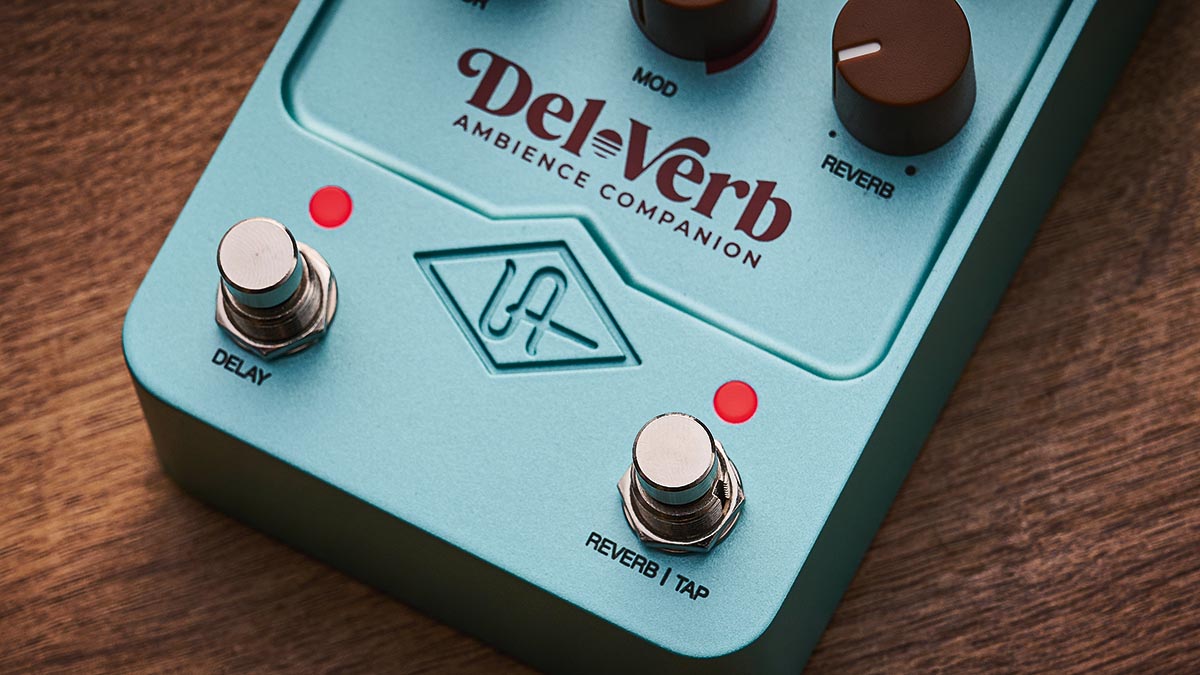
Five out of the six adjustment knobs relate to the delay, with only the reverb’s Level as a hands-on parameter. But there’s more as the Del-Verb has a hidden feature accessible via the app that loads in alternative voicings, not just for the reverb but for the delay, massively opening up the potential tonal palette.
There’s plenty of delay variation with the Color and Mod knobs, which do different things depending on what delay type has been selected. They are, however, commensurate with how an original unit would behave, so all of the DMM's modulation options are ably represented.
The delay feeds into the reverb here and the default is that each is separately footswitchable. For those who like to use tap tempo for delay, the second footswitch can alternatively be set up for that, but it means your reverb is automatically switched in with the delay and not independent any more – not great for anyone who wants to keep reverb always on and bring delay in and out when needed, as is common practice for some players.
Universal Audio UAFX Max Preamp and Compressor
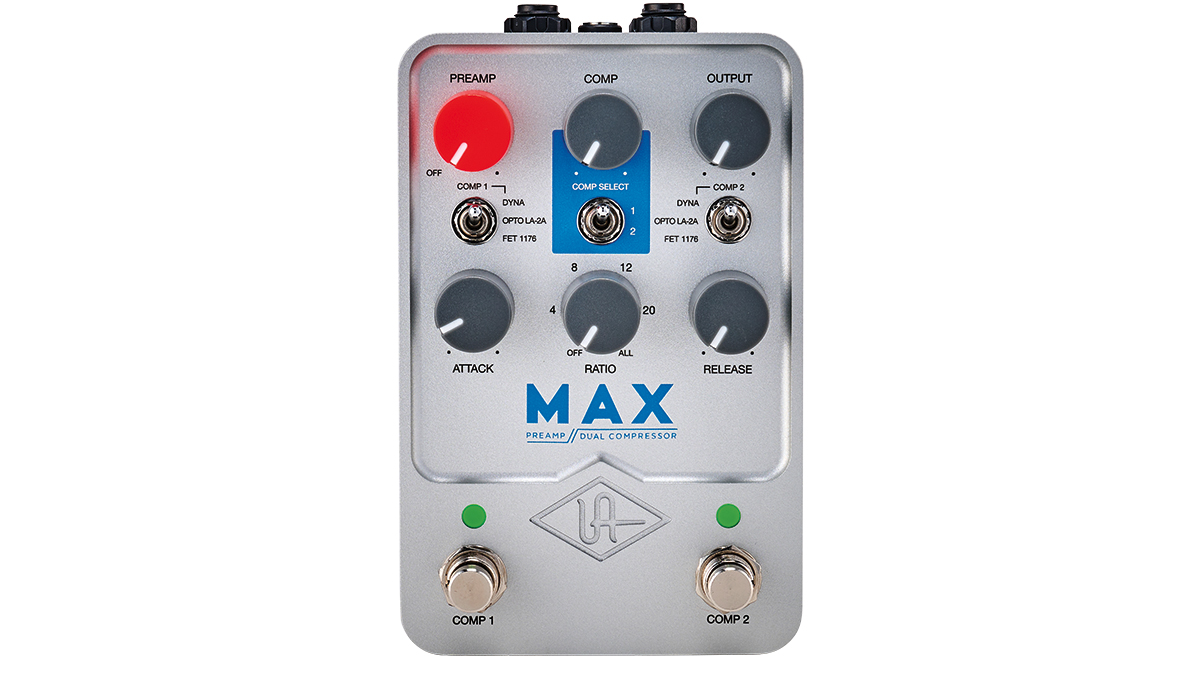
There are certain choices to make in the type of compressor you buy, but the Max has everything covered by giving you emulations of studio Opto and FET compressors, as well as the classic guitar pedal compressors respectively in the Teletronix LA-2A, Urei 1176, and Dyna Comp.
Each of these can be assigned to the pedal’s two completely independent stereo compressors (1 and 2), each with its own footswitch so you can use both together, either in parallel or stacked with compressor 1 feeding compressor 2. Alternatively, there’s an Exclusive mode where you can only use one at a time.
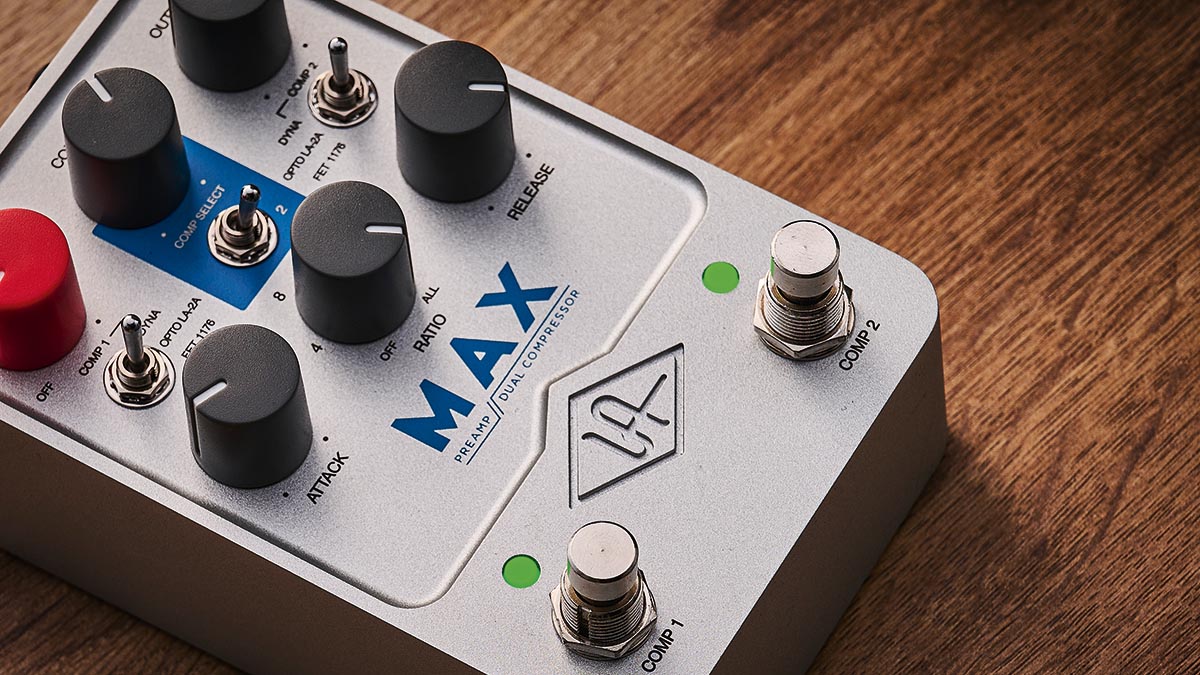
You’ll find plenty of control: all naturally have adjustable compression, while the 1176 gets ratio, attack and release, and the LA-2A gets just ratio and release.
There’s also an emulation of a UA 610 valve preamp, controlled by the red knob that has no effect when fully counterclockwise but can add a lovely grit and drive, with variations on the preamp EQ available from the Control app, all conspiring to make the pedal ideal as an always-on tonal conditioner with the second footswitch bringing in a boost when needed.
While the pedal is capable of covering a multitude of compression scenarios, whether it’s the chicken-picking spank of the Dyna or the controlled grittiness of the 1176, all that’s missing from the Max is a knob to mix in a bit of dry signal for some parallel compression. However, there is a workaround of sorts by using 1 and 2 in parallel mode and having one compressor set for zero compression.
Verdict
There’s no doubting the sound quality of these new pedals, and each is well thought out in terms of its clearly defined function. But there are issues with the practicality for some (but not all) users.
For starters, it seems a bit limited to only be able to access certain functions via a mobile app; we think it would be so much better to do it direct from the pedal.
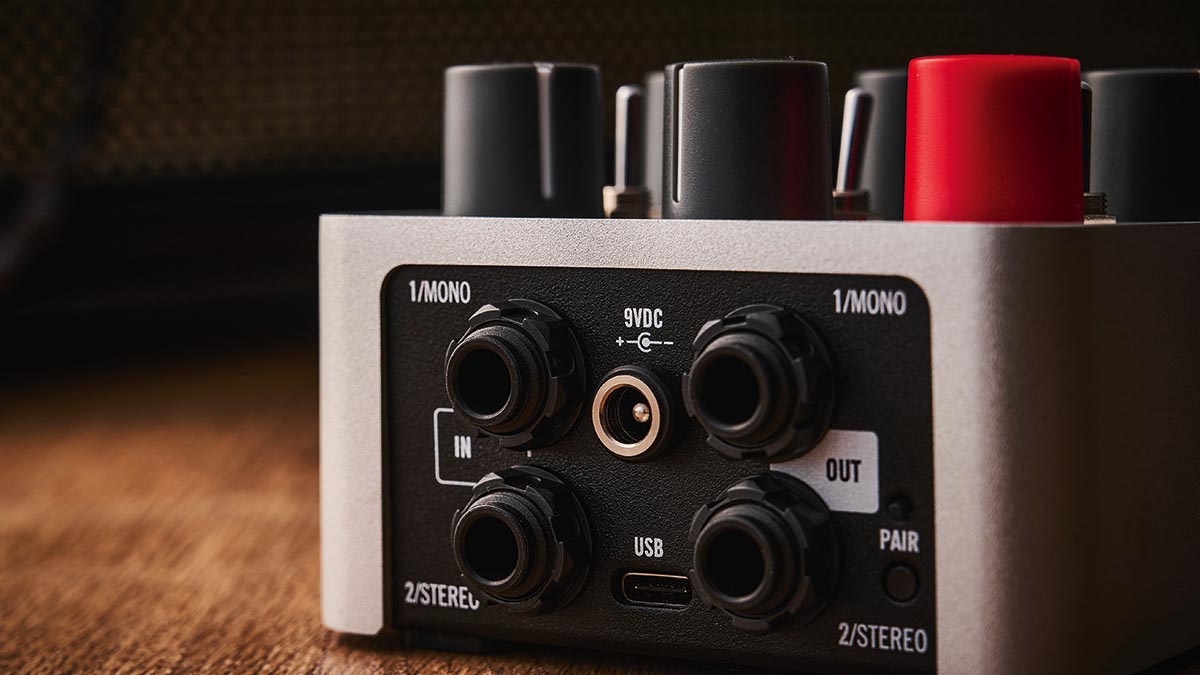
Then there’s the lack of any onboard presets or the possibility of MIDI control. If you demand a wide range of sounds from your pedals in a live set, then you may often find yourself on your knees rapidly manipulating knobs and switches between songs.
On the other hand, if you’re a single-sound type who likes to set an optimum sound for a pedal and use it throughout (perhaps with minor tweaks), there is a certain hands-on ‘set it and forget it’ simplicity that, when coupled with so much scope for dialling in that optimum sound, makes these pedals very attractive.
Specs
Galaxy ’74 Tape Echo & Reverb
- PRICE: $349 / £325
- ORIGIN: Malaysia
- TYPE: Digital recreation of a classic tape echo
- FEATURES: Buffered bypass, analogue dry through, spillover/trails, stereo/dual mono operation
- OPTIONS: 7x head combinations
- CONTROLS: Echo Rate, Feedback, Echo Vol, Input Vol/Tape Age, Dwell/Bass, Reverb Vol/Treble, Head Select switch, Main/Alt switch, Bypass footswitch, Tap/Hold Footwitch
- CONNECTIONS: Standard inputs
(1/Mono, 2/Stereo), standard outputs (1/Mono, 2/Stereo), USB - POWER: 9V DC adaptor (not supplied) 400 mA
- DIMENSIONS: 92 (w) x 146 (d) x 63mm (h)
Del-Verb Ambience Companion
- PRICE: $349 / £325
- ORIGIN: Malaysia
- TYPE: Delay and reverb pedal
- FEATURES: Buffered bypass, analogue dry through, optional spillover/trails, stereo/dual mono operation
- OPTIONS: Tape EP-III, Analog DMM, Precision, Spring ’65, Plate 140, Hall 224
- CONTROLS:
Delay Time, Feedback, Mix, Color, Mod, Reverb, Delay switch, Reverb switch, Delay footswitch, Reverb/Tap footswitch - CONNECTIONS: Standard inputs
(1/Mono, 2/Stereo), standard outputs (1/Mono, 2/Stereo), USB - POWER: 9V DC adaptor (not supplied) 400 mA
- DIMENSIONS: 92 (w) x 146 (d) x 63mm (h)
Max Preamp/Dual Compressor
- PRICE: $349 / £325
- ORIGIN: USA
- TYPE: Dual compressor
- FEATURES: Buffered bypass, two independent compressors stereo operation
- OPTIONS: Dyna, Opto LA-2A, FET 1176
- CONTROLS: Preamp, Comp, Output, Attack, Ratio, Release, Comp Select switch, Comp 1 switch, Comp 2 switch, Comp 1 footswitch, Comp 2 footswitch
- CONNECTIONS: Standard inputs
(1/Mono, 2/Stereo), standard outputs (1/Mono, 2/Stereo), USB - POWER: 9V DC adaptor (not supplied) 400 mA
- DIMENSIONS: 92 (w) x 146 (d) x 63mm (h)
- CONTACT: Universal Audio
Trevor Curwen has played guitar for several decades – he's also mimed it on the UK's Top of the Pops. Much of his working life, though, has been spent behind the mixing desk, during which time he has built up a solid collection of the guitars, amps and pedals needed to cover just about any studio session. He writes pedal reviews for Guitarist and has contributed to Total Guitar, MusicRadar and Future Music among others.













